
Topics
Cuban President Fidel Castro has temporarily handed over power to his brother Raul while he undergoes surgery to repair an ailment that has caused intestinal bleeding. This marks the first time since he became president in 1959 that Castro has ceded power. We play an excerpt of the documentary “Fidel: The Untold Story.” [includes rush transcript]
On Monday night, 79 year old Cuban President Fidel Castro temporarily handed over power to his brother, Raul. This marks the first time since he became president in 1959 that Castro has ceded power. The Cuban President was forced to undergo surgery to repair an ailment that has caused intestinal bleeding. In a speech read by an aide on Cuban television Monday night, Castro said that his ill health was caused by overexerting himself during his travels last month. Raul Castro, who is 75, is Cuba’s defense minister and first vice president. Under Cuba’s constitution, he is first in line to take over from the president in case of incapacitating illness or death. We look at an excerpt of the documentary, “Fidel: The Untold Story”. The film was directed by Estela Bravo and it begins as Fidel Castro and his army enter Cuba in 1956 and start the 2-year struggle to overthrow Cuban dictator Fulgencio Batista. It features, among others, Cuban Guerrilla Commander Juan Almeida, Wayne Smith, the first head of US interest section since the US has had an embassy there, and Fidel’s biographer, Peter Bourne.
- “Fidel: The Untold Story.” Documentary directed by Estela Bravo, featuring, among others, Wayne Smith, the first head of the US interest section since the US had an embassy there, and Fidel’s biographer, Peter Bourne.
Transcript
AMY GOODMAN: In a minute, we’ll be speaking with Ricardo Alarcon, the President of the Cuban National Assembly. But first we’re going to go to an excerpt of the documentary, Fidel: The Untold Story. It’s directed by Estela Bravo, and it begins as Fidel Castro and his army enter Cuba in 1956 and start the two-year struggle to overthrow the Cuban dictator, Batista. It features, among others, Cuban guerrilla commander, Juan Almeida; Wayne Smith, the first ahead of the U.S. interest section, since the U.S. has no embassy in Cuba; and Fidel’s biographer, Peter Bourne.
NARRATOR: The Granma arrived two days later than expected, and the group landed in a mangrove swamp. The 82 men scattered but were soon discovered by Batista’s forces. Fidel and a few others escaped and refused to admit defeat. Of the original 82, only 21 managed to regroup in the Sierra Maestra Mountains. This is where the guerrilla war began. And the initial group was able to survive and grow. Che Guevara was the group’s doctor.
JUAN ALMEIDA: [translated] The first commander Fidel appointed in the Sierra, with everybody in agreement, was Che. Fidel said, “H’s well trained and is the best strategist.” That was Che. Later on, Raul and I, Camilo and the others were also made commanders.
NARRATOR: Much of their support came from the farmers in the Sierra Maestra Mountains. Some of them joined the guerrillas and became commanders. Both men and women soon joined Fidel’s guerrilla movement and, despite traditional male prejudice, a women’s battalion was formed.
PETER BOURNE: One of the most important people in his life was a woman called Celia Sanchez. She was the daughter of a rural physician. Her father had provided free healthcare to many of the poor, impoverished rural people in the area. And she was very much attracted to Fidel’s revolutionary movement.
NARRATOR: Celia Sanchez remained at Fidel’s side for 20 years and held important government posts until her death in 1980. Fidel and his commanders built up their 26th of July Movement guerrilla army from a wide range of political allegiances. Batista’s forces were trained by the United States, which also armed them with tanks, artillery and aircraft. They threw all that force against the guerrillas in a war that lasted two years.
WAYNE SMITH: 26th of July had a strong underground movement in the cities. There were sabotage efforts against the Batista government and demonstrations and so forth. The Batista government reacted very strongly. Bodies were left on the side of the road. Students, young people, who were suspected of being rebel sympathizers, were shot, in some cases jailed and tortured. As a result of all that, public opinion turned massively against Batista.
NARRATOR: An estimated 20,000 people were murdered by government forces during the Batista dictatorship. The rebels put out leaflets and a newspaper and by 1958 also had a radio station keeping the people informed about developments. Fidel’s interviews with foreign journalists ended rumors that he had been killed. Aware of the importance of the media, he made sure he was accessible to the press, even in English.
FIDEL CASTRO: Our political philosophy is representative democracy and social justice in a well planned economy.
[translated] Many of the things we’ve done have gone far beyond what we imagined at the time. Some of the things that have happened have proved more difficult than we had imagined.
NARRATOR: In January 1959, Fidel made a triumphal entry in Havana. It had taken 25 months to defeat Batista. With victory achieved, Fidel sought to make Cuba a united and independent nation.
AMY GOODMAN: An excerpt of the documentary Fidel: The Untold Story by Estela Bravo.

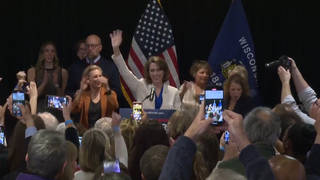
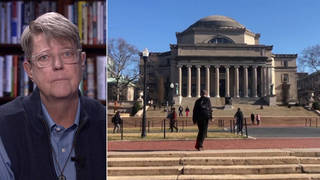
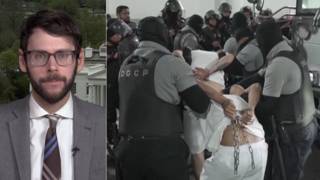
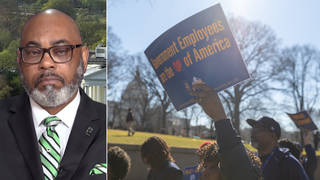





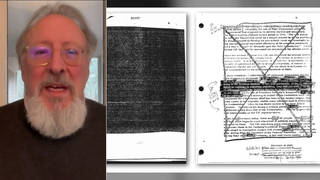
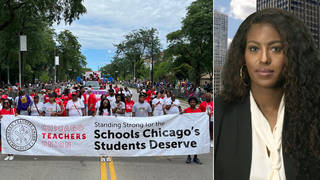
Media Options